Why Is Mount Everest, The World's Highest Peak, So Hard To Climb? A Visual Explainer
Discover why Mount Everest is notoriously challenging to climb in this visual explainer

Mount Everest towers at 8,848 meters (29,029 feet) above sea level, exposing climbers to the extreme altitude of the Himalayas. The notorious jet stream above Everest's summit can reach speeds of over 200 miles per hour, posing a significant hazard to climbers.
As altitude increases, oxygen levels decrease, leading to altitude sickness, which can cause nausea, headaches, and even death.
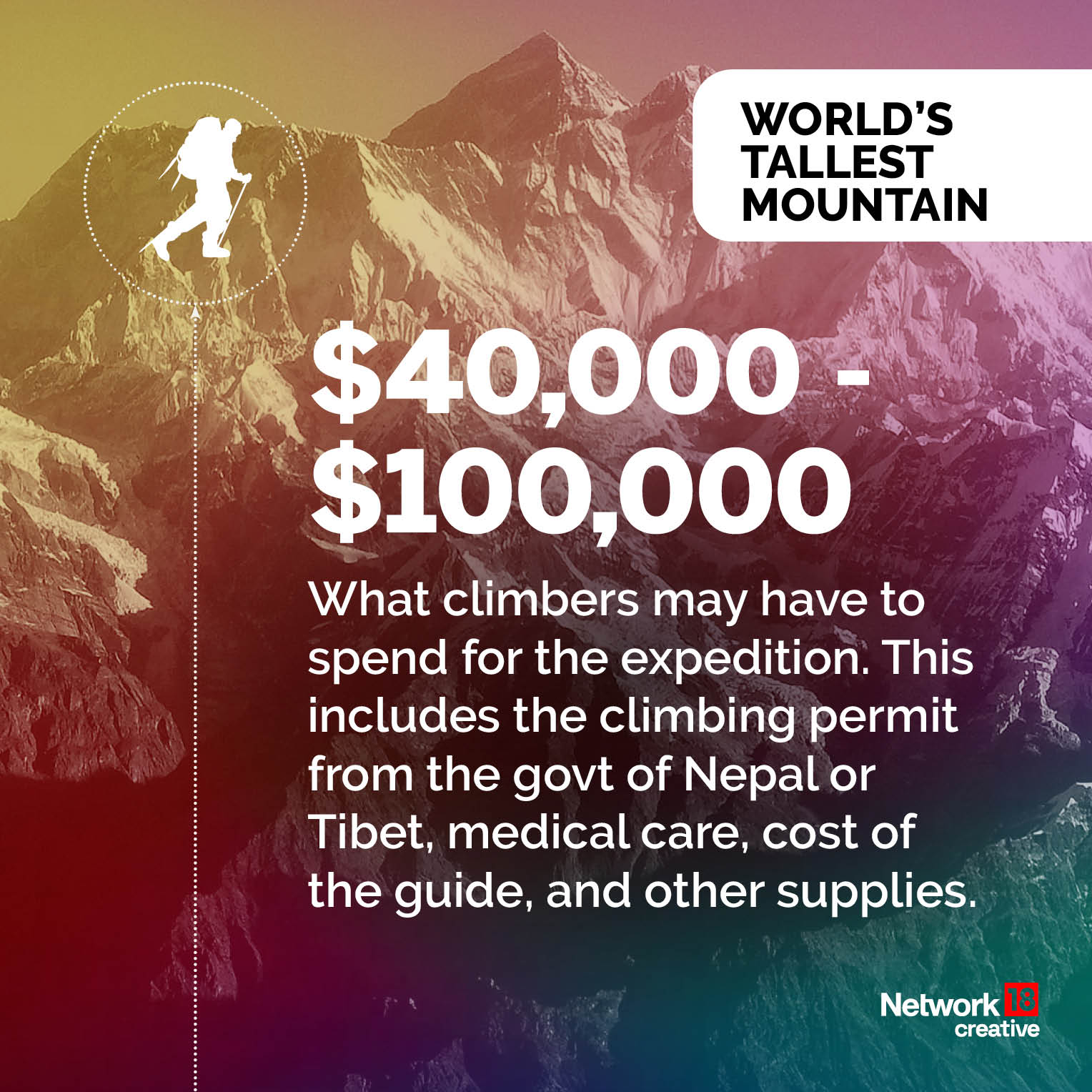
Climbing Mount Everest is an expensive endeavor, with costs ranging from $40,000 to $100,000 or more per person. The expenses include permits, expedition fees, equipment, guide services, oxygen cylinders, and logistics such as transportation and accommodation.

Climbing Everest requires peak physical fitness and mental resilience to endure the grueling conditions and challenges. Climbers must navigate through icefalls, crevasses, and steep ice slopes while carrying heavy packs of equipment and supplies.
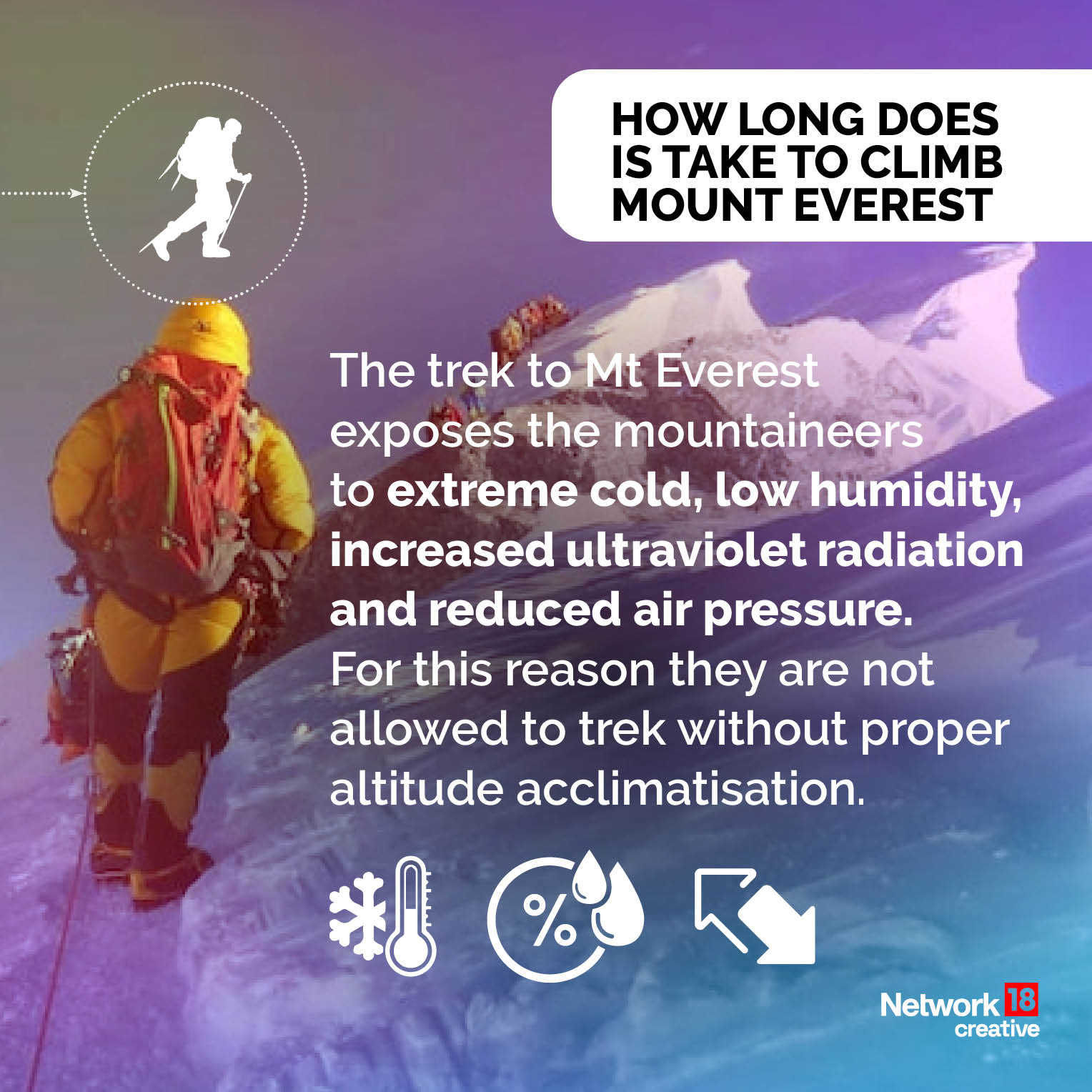
Mount Everest experiences some of the most unpredictable and severe weather conditions on the planet. Climbers face fierce winds, blizzards, and sudden temperature drops, making the ascent even more perilous.
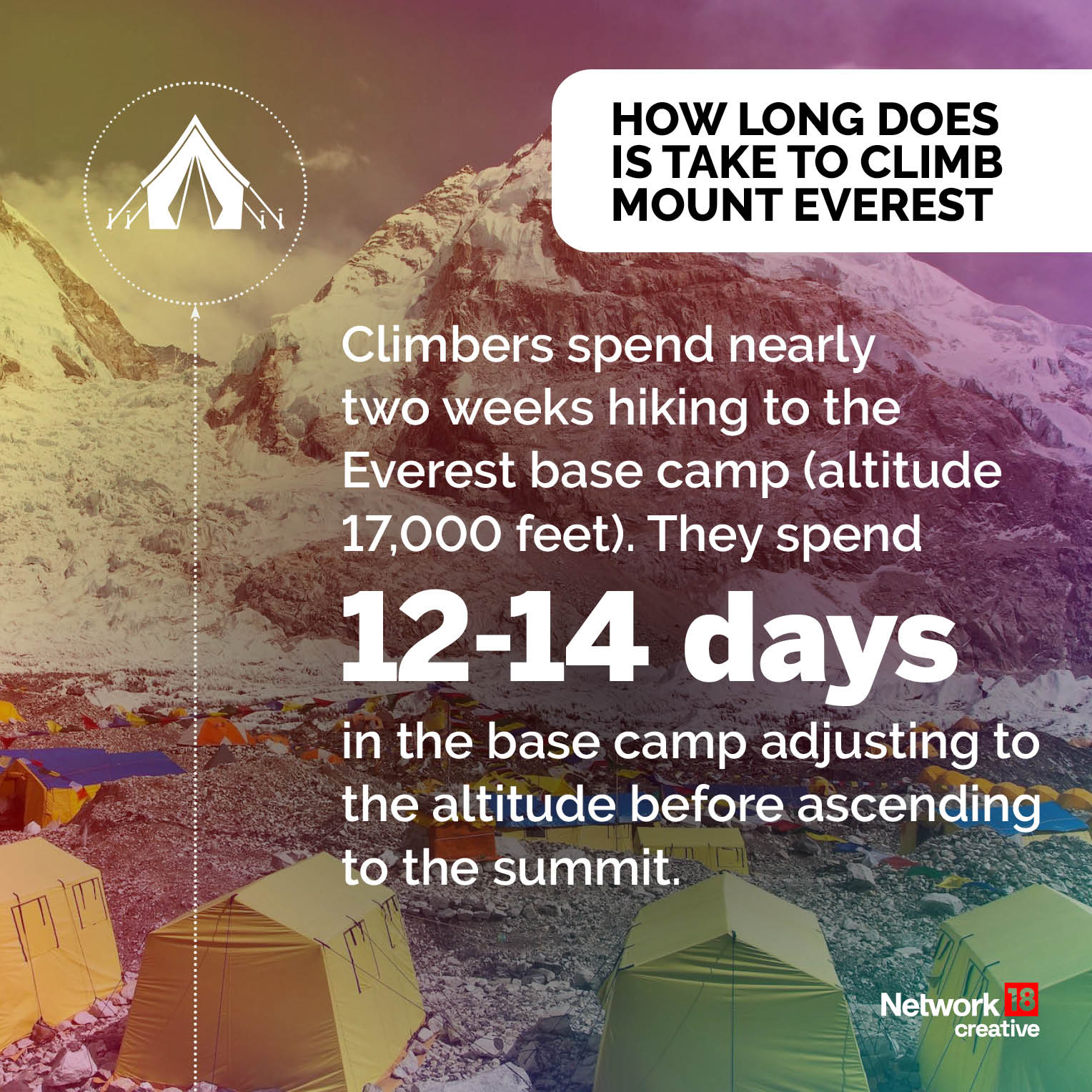
Climbers must acclimatize to the thin air by spending weeks at base camps at progressively higher elevations to reduce the risk of altitude-related illnesses.
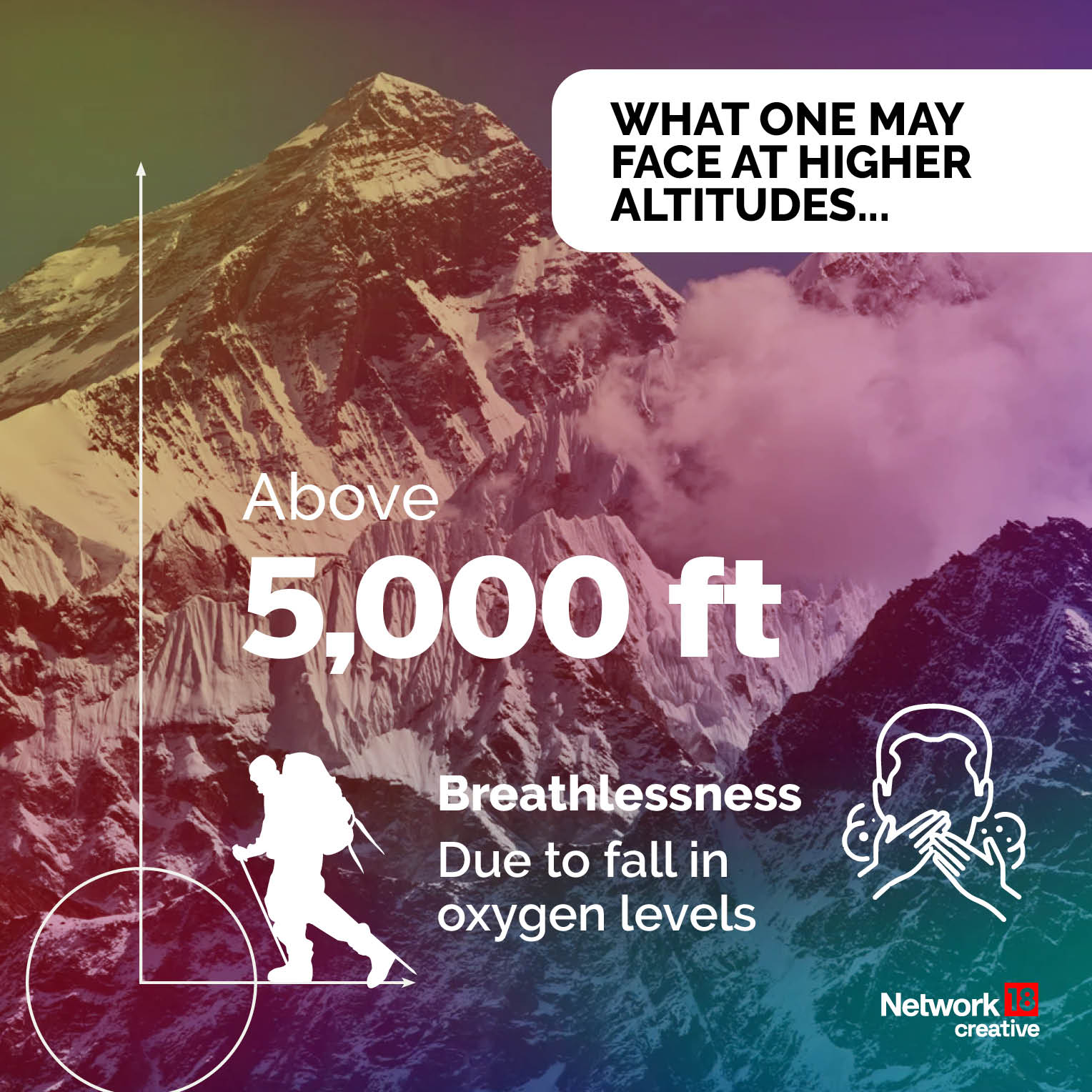
The mental toll of the climb, including prolonged exposure to isolation, fatigue, and fear, tests the climbers' psychological strength.
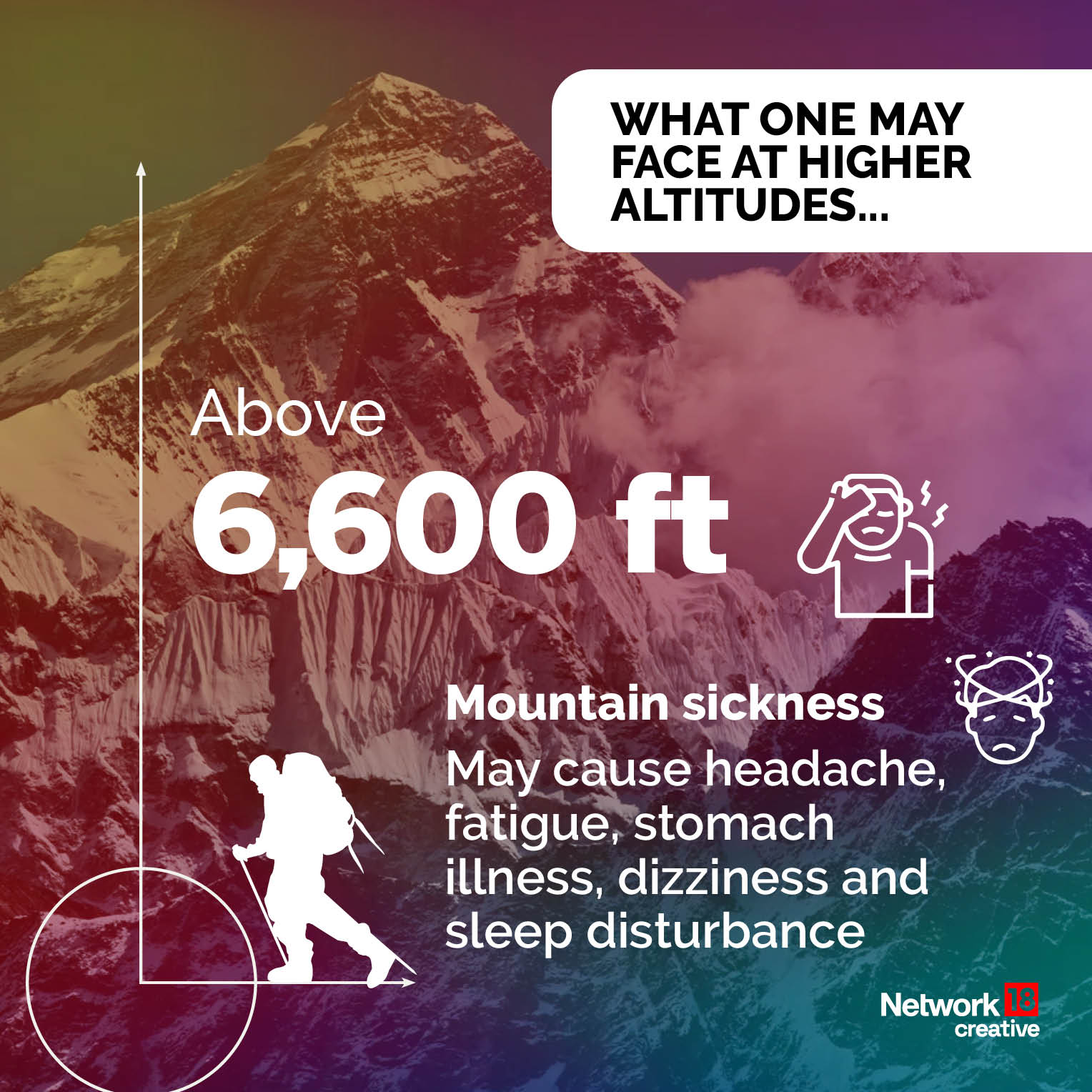
Mount Everest's extreme altitude makes climbers particularly susceptible to mountain sickness, especially as they ascend into the death zone above 8,000 meters (26,000 feet).
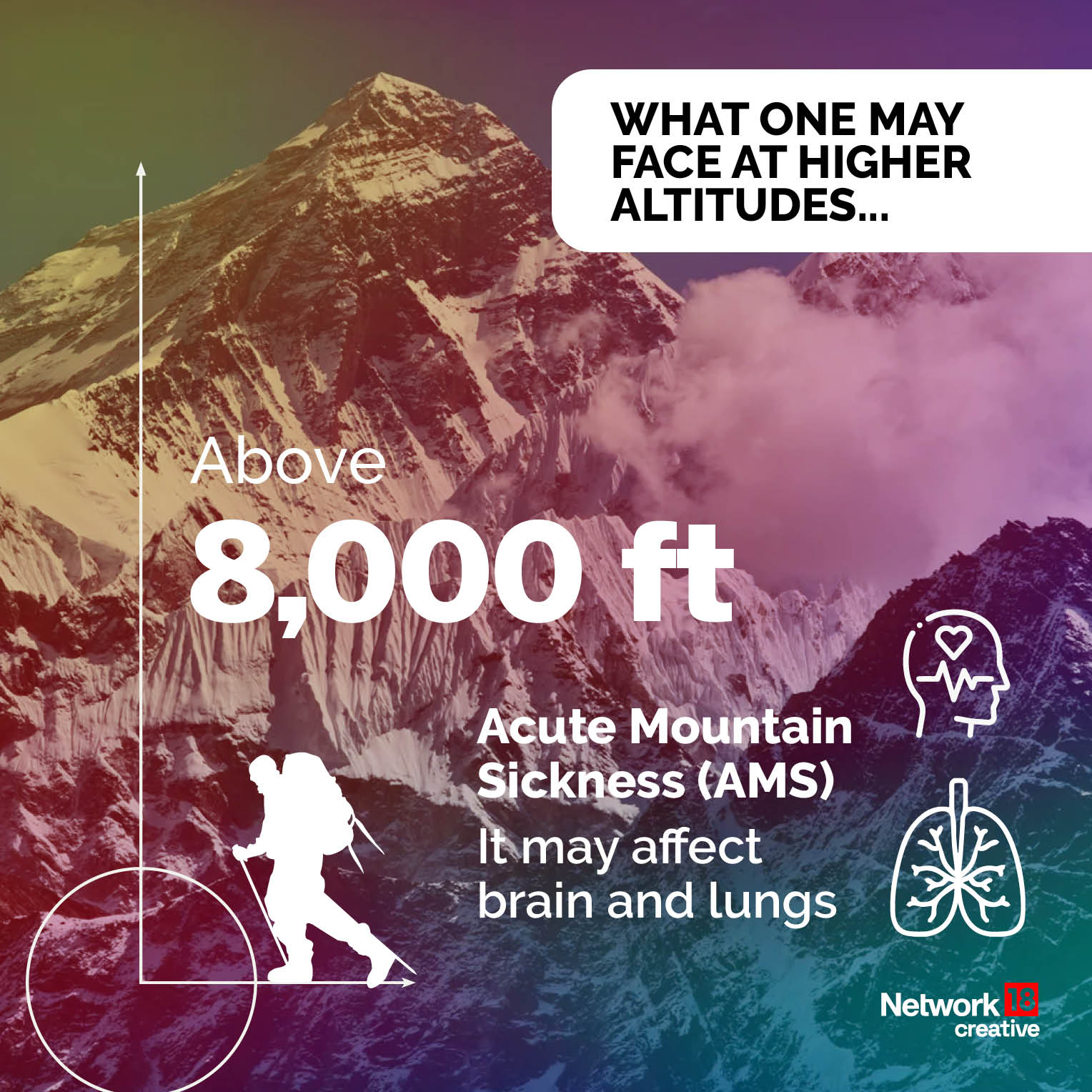
AMS typically manifests at altitudes above 2,500 meters (8,000 feet) and becomes more prevalent as climbers ascend higher. Symptoms of AMS include headache, nausea, fatigue, dizziness, loss of appetite, and difficulty sleeping.
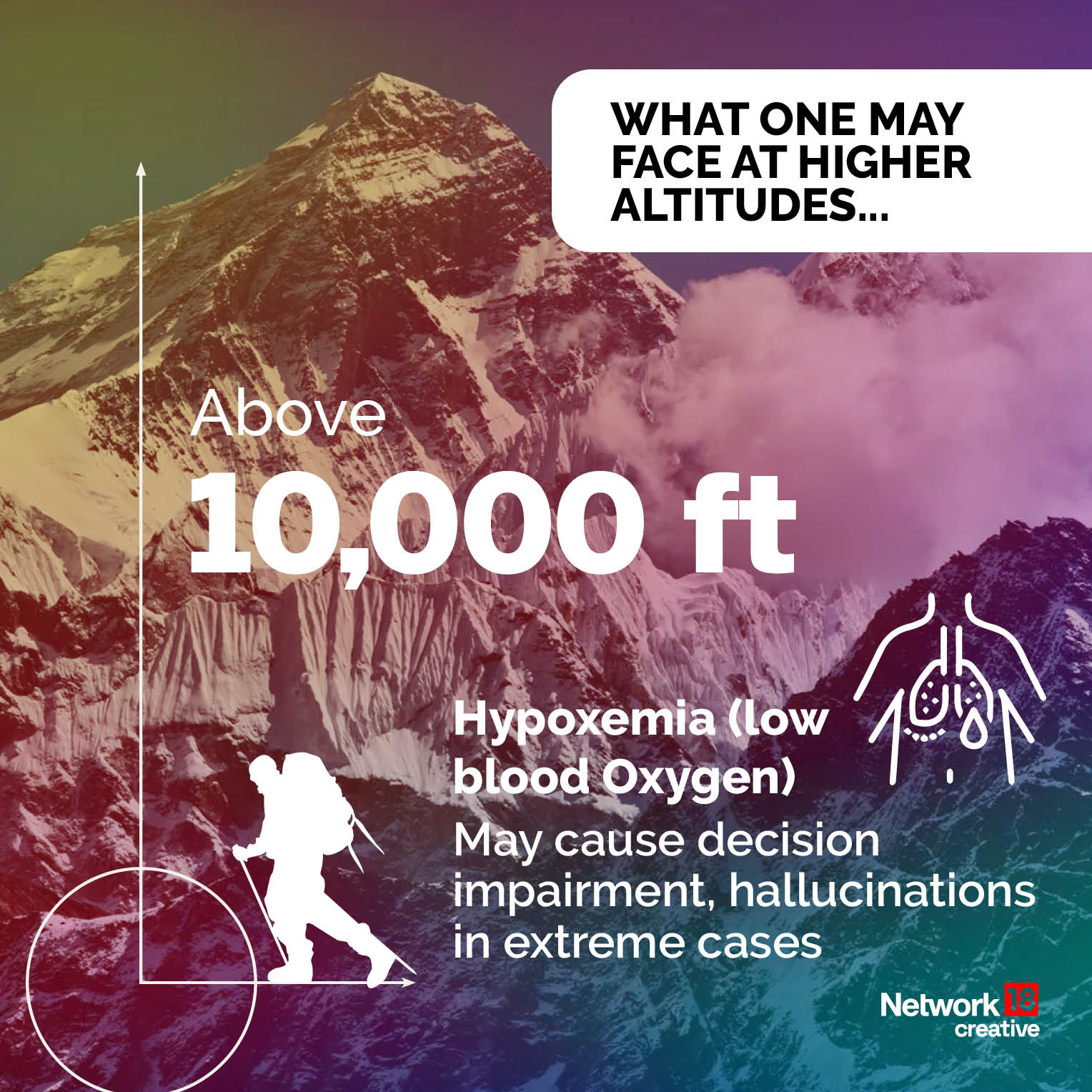
As climbers ascend above 4,000 meters (13,000 feet), the risk and severity of AMS increase, with symptoms intensifying and potentially leading to more serious altitude-related illnesses if left untreated.










